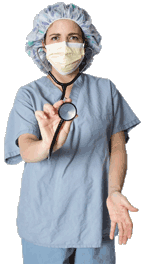At TheHealthBoard, we're committed to delivering accurate, trustworthy information. Our expert-authored content is rigorously fact-checked and sourced from credible authorities. Discover how we uphold the highest standards in providing you with reliable knowledge.
What is a Xyster?
A xyster is a surgical instrument which is used to scrape bones. Xysters are used in both human and veterinary surgery, in a variety of procedures involving the bone and attached tissues. This tool is available from medical supply companies which manufacture surgical instruments. Some of these companies will only sell to hospitals or doctors, due to concerns about abuse of medical instruments or people who may provide medical services without a license, potentially putting patients at risk.
The xyster resembles a rasp or file. It is used to clean bone during surgical procedures. Orthopedic surgeons may utilize this tool when preparing bone for grafting, getting ready to take a biopsy sample, or preparing to pin or otherwise repair a severely damaged bone. Veterinarians, including veterinarians who specialize in orthopedic procedures, use this tool in much the same way.

Like other surgical instruments, the xyster is made from a material which is designed to be sterilized. The tool can be washed in specialized soaps and endure a trip through an autoclave to kill bacteria and other organisms which may be present. It is also routinely checked for signs of metal fatigue or dulling which could be indicators for replacement. Dulling of the instrument can make it less useful, and potentially hurt a patient, making it important to evaluate the tool to confirm that it is in good working order before use.
Along with other surgical tools, the xyster is carefully logged by surgical personnel. If the tool is likely to be needed during surgery, it will be laid out during the preparation of the operating room so that it will be readily accessible. The tool will classically be left in an autoclave bag to maintain sterility and to indicate that it is sterile, with an assistant opening the bag for the surgeon when the tool is required. The tool is also counted out after surgery, along with other equipment used, by a nurse or surgical assistant tasked with ensuring that all tools are accounted for.
The term “xyster” originates in the 1600s, and is derived from a Greek root meaning “to scrape.” Like other surgical tools, training is required to learn to use the tool effectively and to determine when the use of the tool will be appropriate. Training in surgery is performed under the supervision of experienced surgeons, often under the old protocol of “see one, do one, teach one.”
AS FEATURED ON:
AS FEATURED ON:










Discuss this Article
Post your comments